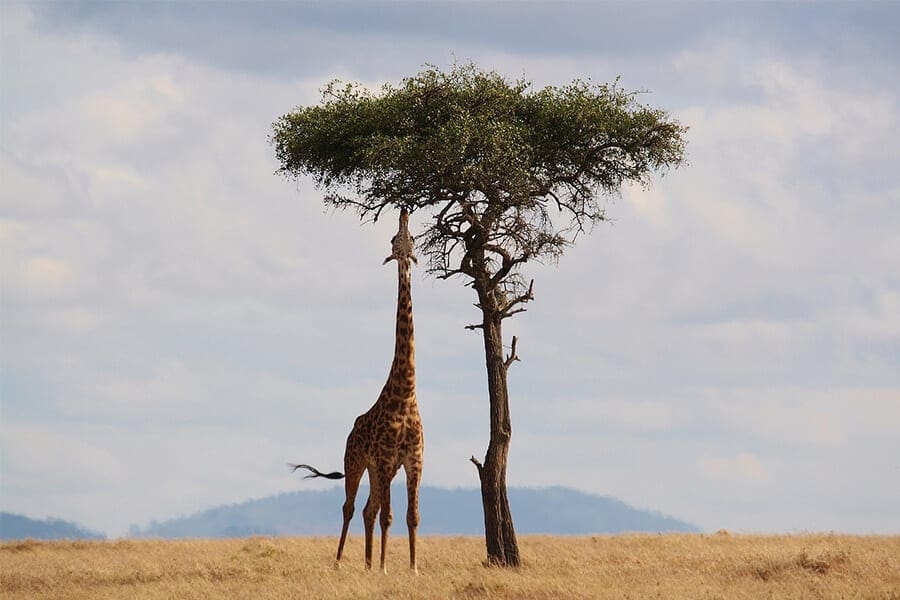

A close-up of Doc.
What better way to spend the longest day of the year than by celebrating the tallest animal in the world with World Giraffe Day? These iconic beasts are renowned for their great height, which stems mostly from six-foot legs and an incredibly long neck. In fact, everything about the giraffe is long, including its tongue—this 21-inch appendage is prehensile, meaning it can be used to grab things such as tasty morsels from tree branches.
Brevard Zoo is home to eight giraffe—Rafiki, Doc, Milenna, Kumi, Greg, Sprinkle, Aiden and Mapenzi. Rafiki is an extremely prolific breeder, having sired more than 10 offspring. They spend their days in their spacious Expedition Africa habitat and retire to a barn behind the scenes each night. If they’re up for a special treat, the giraffe can make their way to the viewing platform, where guests eagerly wait to hand-feed them lettuce.
GIRAFFE ON THE EDGE
Our giraffe are thriving, but the situation in their native range is not quite as rosy. In the 1980s, the total number of wild giraffe was an estimated 155,000 individuals. Today, the International Union for the Conservation of Nature (IUCN) and Species Survival Commission (SSC) estimate that figure is under 100,000—a drop of almost forty percent. In certain areas where giraffe were heavily populated, numbers have dropped by as much as ninety-five percent.
Why are giraffe under so much pressure? As is the case for many other large mammals, severe habitat loss is chiefly to blame. As human populations increase, land use transitions toward our society’s needs, leaving little space for wildlife; with less habitat, food and water becomes sparser and harder to find. Climate change also plays a significant role in the plight of giraffe, causing unpredictable rainfall patterns that lead to fewer resources.

A wild giraffe feeds in Kenya.
In some poverty-stricken regions of Africa, people have turned to hunting giraffe as a source of meat due to a decline in the number of traditionally harvested wildlife, such as impala and wildebeest.
The downfall of giraffe has been fast and unexpected, with populations disappearing in virtual silence. Giraffe numbers are dwindling even quicker than those of better-known endangered species such as elephants and rhinos. Due to the rapidity of this decline, relatively few resources are devoted to the research necessary to save giraffe.
In the past, we have partnered with Giraffe Conservation Foundation (GCF), an organization on the front line of giraffe research and protection. Throughout the years, we have raised $11,660 for GCF from our Quarters for Conservation program, Women of the Wild and other initiatives. By supporting conservation organizations on a community level, we can work together to save these gentle giants from extinction.
